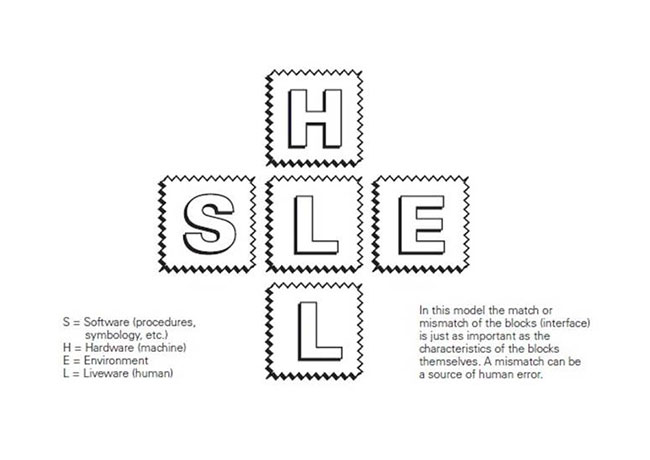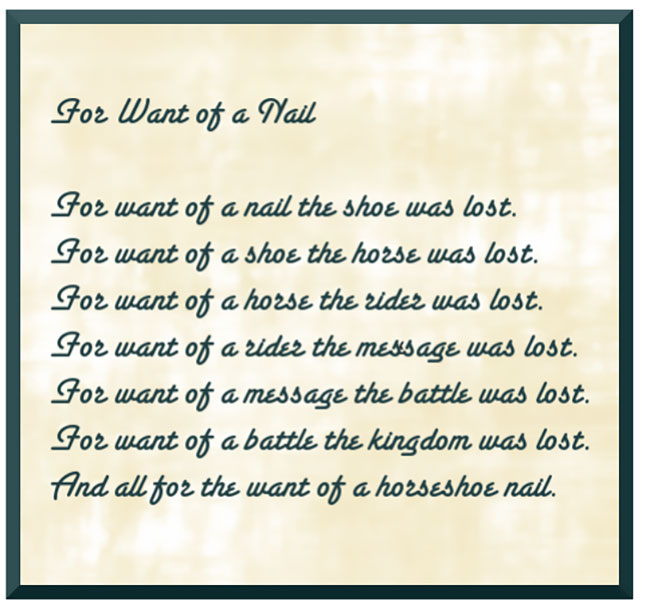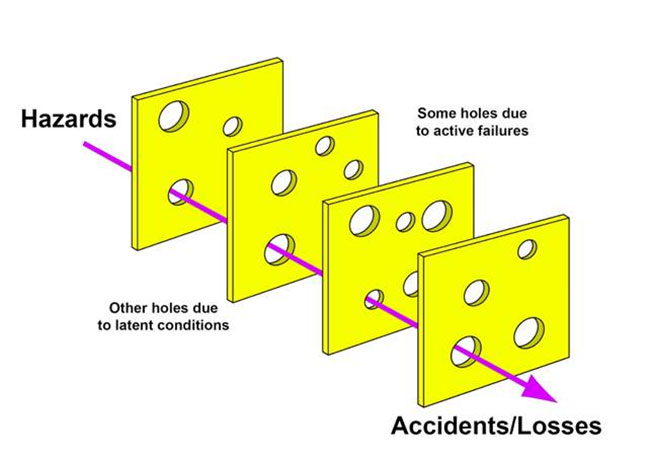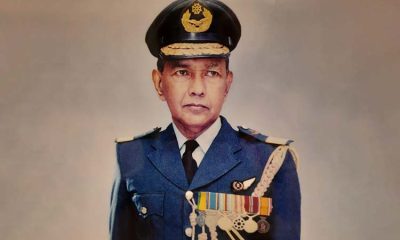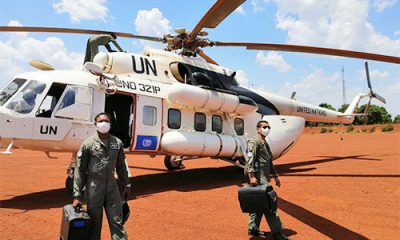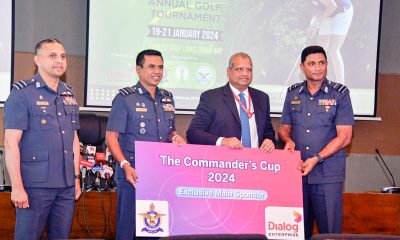Features
Aviation safety and human element
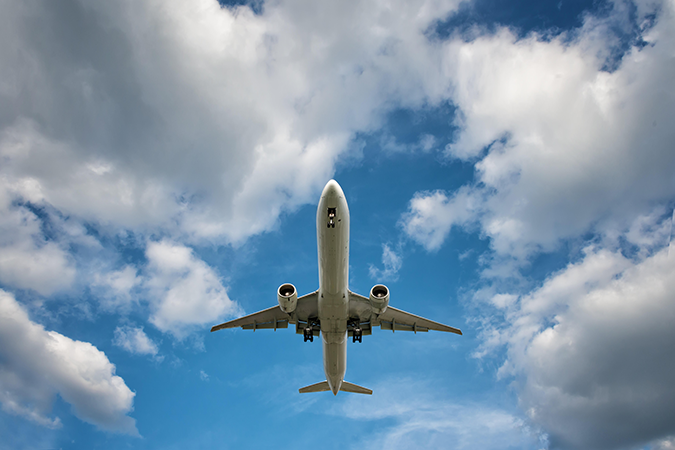
By Capt. G A Fernando
gafplane@sltnet.lk
RCyAF/ SLAF, Air Ceylon, Air Lanka, SIA and SriLankan Airlines.
Former Crew Resource Management (CRM) Facilitator, Singapore Airlines Ltd.
Member, Independent Air Accident Investigation Pool
(The first part of this article appeared in The Island of 18 Sept., 2023)
In 1982, an Air Florida Boeing 737 crashed into the Potomac River, Washington D.C., after takeoff from Washington National Airport in icing conditions. Erroneous engine thrust readings (higher than actual), and the co-pilot’s lack of assertiveness in communicating his concern and comments about aircraft performance during the take-off run were among the factors cited (NTSB/AAR 82- 08).
Experts say that one needs to be ‘aggressively’ safe. All communications (verbal or written) and standard operating procedures (SOPs) should be proactive, predictive and preventive. Some of the accidents mentioned could have been prevented.
As can be seen in the diagram shown, the SHELL boundaries are not smooth but inherently full of serrations, and much effort is needed to interact efficiently and seamlessly. Some experts stress that it is Communication in the form of SOPs that ‘lubricate’ the system for smooth interaction between elements’ while the captain (team leader) sets the tone. In fact, where air safety is concerned, Capt. Tony Kern, a human factors expert, says in his book Redefining Airmanship that to maintain air safety, it is imperative that the team leader knows himself, knows his team, knows his aircraft and equipment, knows his mission and, above all, evaluates the risks involved with the task at hand.There can be problems with the interaction within the team (Liveware and Liveware). Sometimes the Captain (Leader) has to be an expert in conflict resolution! (See Figure 01)
Threats and Hazards
Almost every situation in life is full of ‘threats’. When it involves one personally, it becomes a ‘hazard’. In the aviation context, if there is a flock of birds in the vicinity of an aircraft, they constitute a ‘threat’. However, if that flock of birds starts crossing the flight path of the aircraft, it becomes a ‘hazard’ and avoidance action needs to be taken. Remember the ‘Miracle on the Hudson’? The engines failed because of bird ingestion.
Many airports, too, contain manmade threats and hazards which are usually eliminated only after an accident. In fact, pilots say that blood has to be spilt for changes for the better to occur. At many airports high-rise or security-sensitive buildings are built without planning, and no consideration given to air safety, thus violating the law.
The Ratmalana International Airport is a case in point. On the landing approach from the Attidiya side there is the Parliament and Akuregoda Military Headquarters which are prohibited over flying areas. In the vicinity of the Ratmalana International Airport, there is the Kotelawala Defence Academy and Hospital. At the Galle Road end a solid wall creates a hazard for landing and departing aircraft. Elsewhere, at the Puttalam-Palavi airbase a cement factory is in line with the runway, whilst at China Bay-Trincomalee the silos of a flour mill obstruct landing and take-off paths. These hazards at the latter two airports render them useless as ‘alternate’ (alternative) international airports. If sufficient thought had been given to air safety planning, the loss-making Mattala Rajapaksa International Airport in the Hambantota District would never have been built.
The Swiss Cheese Model
Just as one proverbial swallow doesn’t make a summer, one error alone will not create an incident or an accident. Rather, it will be caused by a chain of unsafe events not picked up by the system. The triviality of one such potentially disastrous cause or lapse is echoed in the words of a poem from the 17th century, later popularised by Benjamin Franklin in his Poor Richard’s Almanac: (See Figure 02)
Reasons for accident occurrences are similar. In fact, the Toyota Corporation asks ‘why’ at least five times when determining the ‘root cause’ of a problem.Aircrew members are regularly taught to recognise unsafe patterns highlighted in past accident investigations, so as to nip them in the bud if and when identified.
Professor James Reason postulated the ‘Swiss Cheese’ model, which states that in any organisation, the layers of safety and security controls in place should be able to block, or cover, one another, to prevent accidents. But unfortunately, there are random holes of all sizes in these layers, like slices of Swiss cheese. Hence, the possibility that with the presence of latent conditions and active failures, these holes will align and allow a potentially dangerous situation or practice to go through without being trapped, thus creating an accident or incident. (See Figure 03)
As illustrated in Reason’s ‘Swiss Cheese’ diagram, latent failures of the system are those that compromise safety, having existed and been taken for granted for short or long periods of time; active failures are immediate, unsafe human acts. In fact, the crew (human element) is the last line of defence before an accident or incident occurs.
To illustrate these points, I shall revisit the 9-foot/3-meter concrete wall that was erected several years ago at the Galle Road end of the runway at Ratmalana International Airport.
This wall could be regarded as a man-made hazard. The runway is 1,833 metres (6,014 feet) in length, not long enough by worldwide standards for a so-called ‘international airport’. By international law, at a pre calculated critical speed (known as the go/no-go speed) pilots are allowed only two seconds in which to make a critical decision whether to stop or continue the take-off. According to calculations by the Boeing Company, a decision to stop any later than two seconds (called ‘dither time’) will result in an aircraft reaching the end of the runway at a speed of 60 knots (69 mph).
On a rainy day, if pilots of a medium-sized aircraft decide to abort the take-off three seconds late, they are unable to stop within the paved runway, with deployment of maximum braking and other stopping devices such as reverse thrust, and the aircraft will ‘overrun’. Because the grass in the overrun area is wet and slippery, the brakes are rendered ineffective. Consequently, in the case of Ratmalana, the aircraft will definitely impact the wall and perhaps catch fire as fuel tanks are usually full during departure.
So, the delay in making a decision to reject the take-off rather than continue would be an ‘active’ failure by the crew. The presence of a solid wall at Ratmalana is the presence of a ‘latent’ condition caused by the Airports Authorities. Although the wall is an ‘accident waiting to happen’, the Sri Lanka Air Force (SLAF), which earns ‘welfare’ money from advertisements on the wall, stubbornly refuses to replace it with a frangible fence, that would break on impact and reduce damage to an over-running aircraft and even vehicular traffic on the Galle Road.
Returning to Reason’s ‘Swiss Cheese’ postulation, air accident investigators usually work backwards from the incident/accident, using the ‘model’ to find the root cause, unsafe acts and any failed defences. The best witnesses are, of course, the crew themselves, although they may not want to voluntarily give information if a punitive attitude is adopted by accident investigators and the authorities. It is a long-held belief that the crew involved are damned if they tell the truth and damned if they don’t. In the recent past in Sri Lanka, the Law and the Police were quick to ‘criminalise’ air accidents. Almost two years ago the accountable manager and chief engineer were arrested and remanded for failure to prevent an accident. That is another story.
The protocol should be for an independent team to do a non-punitive inquiry, and if and only if elements of negligence are highlighted in the final accident report, then the law should take its course under the direction and oversight of the Attorney-General. In short, the authorities in Sri Lanka need to get their act together and conduct themselves in a professional, impartial, fair-minded manner.
Accidents don’t only happen to “other people”, and with threats everywhere we have to learn to mitigate and manage them. While it is human to err, could we eliminate error completely? I think not. But pilots can learn to trap and minimise their ability to make errors by using their team effectively, including pre- and post-flight briefings. A common question that should continue to be asked is: “Could we have (as a team) done things better?”
Will automation of some tasks help? Instructors often repeat the adage, “Fly the aircraft and don’t allow the aircraft to fly you.” Conversely, “The aircraft flies by itself. You assist it to fly”. I believe it is the level of automation that matters, depending on circumstances.Bernard Ziegler, a French pilot and engineer who served in Airbus Industrie as senior vice president for engineering – and was the son of Airbus founder Henri Ziegler – was well known for his evangelical zeal for the application of computerised control systems in Airbus airplanes, commencing with the revolutionary A320 airliner. Bernard Ziegler attempted to design the human out of the flight deck in Airbus’s so-called ‘fly-by-wire’ airplanes, which in their early days were involved in a series of incidents and fatal accidents, due mainly to the mismatch of the man/machine interface. So much so that the A320 was called the ‘Scare-bus’ in jest. Even today many Airbus pilots are heard to ask while flying, in perplexed tones: “What is it doing now?” or “I have never seen this happen before.”
A more recent story is that of the Boeing 737 MAX. When I flew the basic Boeing 737-200 many years ago, our Irish instructor called it the ‘thinking man’s aircraft’, a perfect match between man and machine. Somehow, due to design quirks in the newly designed 737 MAX, an automatic system called MCAS (Manoeuvring Characteristics Augmentation System) was incorporated. If the aircraft got into an unusual and unsafe nose-up attitude, MCAS would be automatically activated and lower the nose to a safer angle.
Unfortunately, during the somewhat rushed introduction of the 737 MAX onto the market, many airline crews were not sufficiently trained in how to override the system – if MCAS was activated due to false indications from, say, a computer or instrument malfunction. Worse still, some airlines’ pilots were not even told that their new airplanes were fitted with such a system, and therefore unaware of what to do if and when MCAS became activated for no apparent reason. This ignorance, through no fault of the pilots, resulted in two disastrous MAX crashes, in Indonesia and Ethiopia, with a total loss of 346 lives.
As the ‘cold hard facts’ later emerged, it became apparent that although the ‘MAX’ was arguably a totally new type of aircraft, it was designated as a Boeing 737-800 to minimise legal crew-training time on the type. This extra training was seen as an undesirable burden for Boeing’s customer airlines, who would have to withdraw captains and first officers from the line for training, thus incurring loss of productivity and revenue for the airlines.
Boeing’s intent was, therefore, for the training (non-productive) period to be as short as possible. But in practice corners were dangerously cut. The US regulator, the Federal Aviation Administration (FAA) – in this case the ‘human element’ – went along with the manufacturer’s sales and training programme, which ultimately resulted in incidents, accidents, and loss of life.
In summary, statistics show that although accidents have decreased to a small percentage in terms of flights and hours flown, the number of certified air operators is also increasing, which causes the number of accidents to increase. Difficult as it is to contemplate, it wouldn’t be wrong to say that the potential exists for more human factor-based accidents to occur in future.
Features
The heart-friendly health minister

by Dr Gotabhya Ranasinghe
Senior Consultant Cardiologist
National Hospital Sri Lanka
When we sought a meeting with Hon Dr. Ramesh Pathirana, Minister of Health, he graciously cleared his busy schedule to accommodate us. Renowned for his attentive listening and deep understanding, Minister Pathirana is dedicated to advancing the health sector. His openness and transparency exemplify the qualities of an exemplary politician and minister.
Dr. Palitha Mahipala, the current Health Secretary, demonstrates both commendable enthusiasm and unwavering support. This combination of attributes makes him a highly compatible colleague for the esteemed Minister of Health.
Our discussion centered on a project that has been in the works for the past 30 years, one that no other minister had managed to advance.
Minister Pathirana, however, recognized the project’s significance and its potential to revolutionize care for heart patients.
The project involves the construction of a state-of-the-art facility at the premises of the National Hospital Colombo. The project’s location within the premises of the National Hospital underscores its importance and relevance to the healthcare infrastructure of the nation.
This facility will include a cardiology building and a tertiary care center, equipped with the latest technology to handle and treat all types of heart-related conditions and surgeries.
Securing funding was a major milestone for this initiative. Minister Pathirana successfully obtained approval for a $40 billion loan from the Asian Development Bank. With the funding in place, the foundation stone is scheduled to be laid in September this year, and construction will begin in January 2025.
This project guarantees a consistent and uninterrupted supply of stents and related medications for heart patients. As a result, patients will have timely access to essential medical supplies during their treatment and recovery. By securing these critical resources, the project aims to enhance patient outcomes, minimize treatment delays, and maintain the highest standards of cardiac care.
Upon its fruition, this monumental building will serve as a beacon of hope and healing, symbolizing the unwavering dedication to improving patient outcomes and fostering a healthier society.We anticipate a future marked by significant progress and positive outcomes in Sri Lanka’s cardiovascular treatment landscape within the foreseeable timeframe.
Features
A LOVING TRIBUTE TO JESUIT FR. ALOYSIUS PIERIS ON HIS 90th BIRTHDAY

by Fr. Emmanuel Fernando, OMI
Jesuit Fr. Aloysius Pieris (affectionately called Fr. Aloy) celebrated his 90th birthday on April 9, 2024 and I, as the editor of our Oblate Journal, THE MISSIONARY OBLATE had gone to press by that time. Immediately I decided to publish an article, appreciating the untiring selfless services he continues to offer for inter-Faith dialogue, the renewal of the Catholic Church, his concern for the poor and the suffering Sri Lankan masses and to me, the present writer.
It was in 1988, when I was appointed Director of the Oblate Scholastics at Ampitiya by the then Oblate Provincial Fr. Anselm Silva, that I came to know Fr. Aloy more closely. Knowing well his expertise in matters spiritual, theological, Indological and pastoral, and with the collaborative spirit of my companion-formators, our Oblate Scholastics were sent to Tulana, the Research and Encounter Centre, Kelaniya, of which he is the Founder-Director, for ‘exposure-programmes’ on matters spiritual, biblical, theological and pastoral. Some of these dimensions according to my view and that of my companion-formators, were not available at the National Seminary, Ampitiya.
Ever since that time, our Oblate formators/ accompaniers at the Oblate Scholasticate, Ampitiya , have continued to send our Oblate Scholastics to Tulana Centre for deepening their insights and convictions regarding matters needed to serve the people in today’s context. Fr. Aloy also had tried very enthusiastically with the Oblate team headed by Frs. Oswald Firth and Clement Waidyasekara to begin a Theologate, directed by the Religious Congregations in Sri Lanka, for the contextual formation/ accompaniment of their members. It should very well be a desired goal of the Leaders / Provincials of the Religious Congregations.
Besides being a formator/accompanier at the Oblate Scholasticate, I was entrusted also with the task of editing and publishing our Oblate journal, ‘The Missionary Oblate’. To maintain the quality of the journal I continue to depend on Fr. Aloy for his thought-provoking and stimulating articles on Biblical Spirituality, Biblical Theology and Ecclesiology. I am very grateful to him for his generous assistance. Of late, his writings on renewal of the Church, initiated by Pope St. John XX111 and continued by Pope Francis through the Synodal path, published in our Oblate journal, enable our readers to focus their attention also on the needed renewal in the Catholic Church in Sri Lanka. Fr. Aloy appreciated very much the Synodal path adopted by the Jesuit Pope Francis for the renewal of the Church, rooted very much on prayerful discernment. In my Religious and presbyteral life, Fr.Aloy continues to be my spiritual animator / guide and ongoing formator / acccompanier.
Fr. Aloysius Pieris, BA Hons (Lond), LPh (SHC, India), STL (PFT, Naples), PhD (SLU/VC), ThD (Tilburg), D.Ltt (KU), has been one of the eminent Asian theologians well recognized internationally and one who has lectured and held visiting chairs in many universities both in the West and in the East. Many members of Religious Congregations from Asian countries have benefited from his lectures and guidance in the East Asian Pastoral Institute (EAPI) in Manila, Philippines. He had been a Theologian consulted by the Federation of Asian Bishops’ Conferences for many years. During his professorship at the Gregorian University in Rome, he was called to be a member of a special group of advisers on other religions consulted by Pope Paul VI.
Fr. Aloy is the author of more than 30 books and well over 500 Research Papers. Some of his books and articles have been translated and published in several countries. Among those books, one can find the following: 1) The Genesis of an Asian Theology of Liberation (An Autobiographical Excursus on the Art of Theologising in Asia, 2) An Asian Theology of Liberation, 3) Providential Timeliness of Vatican 11 (a long-overdue halt to a scandalous millennium, 4) Give Vatican 11 a chance, 5) Leadership in the Church, 6) Relishing our faith in working for justice (Themes for study and discussion), 7) A Message meant mainly, not exclusively for Jesuits (Background information necessary for helping Francis renew the Church), 8) Lent in Lanka (Reflections and Resolutions, 9) Love meets wisdom (A Christian Experience of Buddhism, 10) Fire and Water 11) God’s Reign for God’s poor, 12) Our Unhiddden Agenda (How we Jesuits work, pray and form our men). He is also the Editor of two journals, Vagdevi, Journal of Religious Reflection and Dialogue, New Series.
Fr. Aloy has a BA in Pali and Sanskrit from the University of London and a Ph.D in Buddhist Philosophy from the University of Sri Lankan, Vidyodaya Campus. On Nov. 23, 2019, he was awarded the prestigious honorary Doctorate of Literature (D.Litt) by the Chancellor of the University of Kelaniya, the Most Venerable Welamitiyawe Dharmakirthi Sri Kusala Dhamma Thera.
Fr. Aloy continues to be a promoter of Gospel values and virtues. Justice as a constitutive dimension of love and social concern for the downtrodden masses are very much noted in his life and work. He had very much appreciated the commitment of the late Fr. Joseph (Joe) Fernando, the National Director of the Social and Economic Centre (SEDEC) for the poor.
In Sri Lanka, a few religious Congregations – the Good Shepherd Sisters, the Christian Brothers, the Marist Brothers and the Oblates – have invited him to animate their members especially during their Provincial Congresses, Chapters and International Conferences. The mainline Christian Churches also have sought his advice and followed his seminars. I, for one, regret very much, that the Sri Lankan authorities of the Catholic Church –today’s Hierarchy—- have not sought Fr.
Aloy’s expertise for the renewal of the Catholic Church in Sri Lanka and thus have not benefited from the immense store of wisdom and insight that he can offer to our local Church while the Sri Lankan bishops who governed the Catholic church in the immediate aftermath of the Second Vatican Council (Edmund Fernando OMI, Anthony de Saram, Leo Nanayakkara OSB, Frank Marcus Fernando, Paul Perera,) visited him and consulted him on many matters. Among the Tamil Bishops, Bishop Rayappu Joseph was keeping close contact with him and Bishop J. Deogupillai hosted him and his team visiting him after the horrible Black July massacre of Tamils.
Features
A fairy tale, success or debacle

Sri Lanka-Singapore Free Trade Agreement
By Gomi Senadhira
senadhiragomi@gmail.com
“You might tell fairy tales, but the progress of a country cannot be achieved through such narratives. A country cannot be developed by making false promises. The country moved backward because of the electoral promises made by political parties throughout time. We have witnessed that the ultimate result of this is the country becoming bankrupt. Unfortunately, many segments of the population have not come to realize this yet.” – President Ranil Wickremesinghe, 2024 Budget speech
Any Sri Lankan would agree with the above words of President Wickremesinghe on the false promises our politicians and officials make and the fairy tales they narrate which bankrupted this country. So, to understand this, let’s look at one such fairy tale with lots of false promises; Ranil Wickremesinghe’s greatest achievement in the area of international trade and investment promotion during the Yahapalana period, Sri Lanka-Singapore Free Trade Agreement (SLSFTA).
It is appropriate and timely to do it now as Finance Minister Wickremesinghe has just presented to parliament a bill on the National Policy on Economic Transformation which includes the establishment of an Office for International Trade and the Sri Lanka Institute of Economics and International Trade.
Was SLSFTA a “Cleverly negotiated Free Trade Agreement” as stated by the (former) Minister of Development Strategies and International Trade Malik Samarawickrama during the Parliamentary Debate on the SLSFTA in July 2018, or a colossal blunder covered up with lies, false promises, and fairy tales? After SLSFTA was signed there were a number of fairy tales published on this agreement by the Ministry of Development Strategies and International, Institute of Policy Studies, and others.
However, for this article, I would like to limit my comments to the speech by Minister Samarawickrama during the Parliamentary Debate, and the two most important areas in the agreement which were covered up with lies, fairy tales, and false promises, namely: revenue loss for Sri Lanka and Investment from Singapore. On the other important area, “Waste products dumping” I do not want to comment here as I have written extensively on the issue.
1. The revenue loss
During the Parliamentary Debate in July 2018, Minister Samarawickrama stated “…. let me reiterate that this FTA with Singapore has been very cleverly negotiated by us…. The liberalisation programme under this FTA has been carefully designed to have the least impact on domestic industry and revenue collection. We have included all revenue sensitive items in the negative list of items which will not be subject to removal of tariff. Therefore, 97.8% revenue from Customs duty is protected. Our tariff liberalisation will take place over a period of 12-15 years! In fact, the revenue earned through tariffs on goods imported from Singapore last year was Rs. 35 billion.
The revenue loss for over the next 15 years due to the FTA is only Rs. 733 million– which when annualised, on average, is just Rs. 51 million. That is just 0.14% per year! So anyone who claims the Singapore FTA causes revenue loss to the Government cannot do basic arithmetic! Mr. Speaker, in conclusion, I call on my fellow members of this House – don’t mislead the public with baseless criticism that is not grounded in facts. Don’t look at petty politics and use these issues for your own political survival.”
I was surprised to read the minister’s speech because an article published in January 2018 in “The Straits Times“, based on information released by the Singaporean Negotiators stated, “…. With the FTA, tariff savings for Singapore exports are estimated to hit $10 million annually“.
As the annual tariff savings (that is the revenue loss for Sri Lanka) calculated by the Singaporean Negotiators, Singaporean $ 10 million (Sri Lankan rupees 1,200 million in 2018) was way above the rupees’ 733 million revenue loss for 15 years estimated by the Sri Lankan negotiators, it was clear to any observer that one of the parties to the agreement had not done the basic arithmetic!
Six years later, according to a report published by “The Morning” newspaper, speaking at the Committee on Public Finance (COPF) on 7th May 2024, Mr Samarawickrama’s chief trade negotiator K.J. Weerasinghehad had admitted “…. that forecasted revenue loss for the Government of Sri Lanka through the Singapore FTA is Rs. 450 million in 2023 and Rs. 1.3 billion in 2024.”
If these numbers are correct, as tariff liberalisation under the SLSFTA has just started, we will pass Rs 2 billion very soon. Then, the question is how Sri Lanka’s trade negotiators made such a colossal blunder. Didn’t they do their basic arithmetic? If they didn’t know how to do basic arithmetic they should have at least done their basic readings. For example, the headline of the article published in The Straits Times in January 2018 was “Singapore, Sri Lanka sign FTA, annual savings of $10m expected”.
Anyway, as Sri Lanka’s chief negotiator reiterated at the COPF meeting that “…. since 99% of the tariffs in Singapore have zero rates of duty, Sri Lanka has agreed on 80% tariff liberalisation over a period of 15 years while expecting Singapore investments to address the imbalance in trade,” let’s turn towards investment.
Investment from Singapore
In July 2018, speaking during the Parliamentary Debate on the FTA this is what Minister Malik Samarawickrama stated on investment from Singapore, “Already, thanks to this FTA, in just the past two-and-a-half months since the agreement came into effect we have received a proposal from Singapore for investment amounting to $ 14.8 billion in an oil refinery for export of petroleum products. In addition, we have proposals for a steel manufacturing plant for exports ($ 1 billion investment), flour milling plant ($ 50 million), sugar refinery ($ 200 million). This adds up to more than $ 16.05 billion in the pipeline on these projects alone.
And all of these projects will create thousands of more jobs for our people. In principle approval has already been granted by the BOI and the investors are awaiting the release of land the environmental approvals to commence the project.
I request the Opposition and those with vested interests to change their narrow-minded thinking and join us to develop our country. We must always look at what is best for the whole community, not just the few who may oppose. We owe it to our people to courageously take decisions that will change their lives for the better.”
According to the media report I quoted earlier, speaking at the Committee on Public Finance (COPF) Chief Negotiator Weerasinghe has admitted that Sri Lanka was not happy with overall Singapore investments that have come in the past few years in return for the trade liberalisation under the Singapore-Sri Lanka Free Trade Agreement. He has added that between 2021 and 2023 the total investment from Singapore had been around $162 million!
What happened to those projects worth $16 billion negotiated, thanks to the SLSFTA, in just the two-and-a-half months after the agreement came into effect and approved by the BOI? I do not know about the steel manufacturing plant for exports ($ 1 billion investment), flour milling plant ($ 50 million) and sugar refinery ($ 200 million).
However, story of the multibillion-dollar investment in the Petroleum Refinery unfolded in a manner that would qualify it as the best fairy tale with false promises presented by our politicians and the officials, prior to 2019 elections.
Though many Sri Lankans got to know, through the media which repeatedly highlighted a plethora of issues surrounding the project and the questionable credentials of the Singaporean investor, the construction work on the Mirrijiwela Oil Refinery along with the cement factory began on the24th of March 2019 with a bang and Minister Ranil Wickremesinghe and his ministers along with the foreign and local dignitaries laid the foundation stones.
That was few months before the 2019 Presidential elections. Inaugurating the construction work Prime Minister Ranil Wickremesinghe said the projects will create thousands of job opportunities in the area and surrounding districts.
The oil refinery, which was to be built over 200 acres of land, with the capacity to refine 200,000 barrels of crude oil per day, was to generate US$7 billion of exports and create 1,500 direct and 3,000 indirect jobs. The construction of the refinery was to be completed in 44 months. Four years later, in August 2023 the Cabinet of Ministers approved the proposal presented by President Ranil Wickremesinghe to cancel the agreement with the investors of the refinery as the project has not been implemented! Can they explain to the country how much money was wasted to produce that fairy tale?
It is obvious that the President, ministers, and officials had made huge blunders and had deliberately misled the public and the parliament on the revenue loss and potential investment from SLSFTA with fairy tales and false promises.
As the president himself said, a country cannot be developed by making false promises or with fairy tales and these false promises and fairy tales had bankrupted the country. “Unfortunately, many segments of the population have not come to realize this yet”.
(The writer, a specialist and an activist on trade and development issues . )

